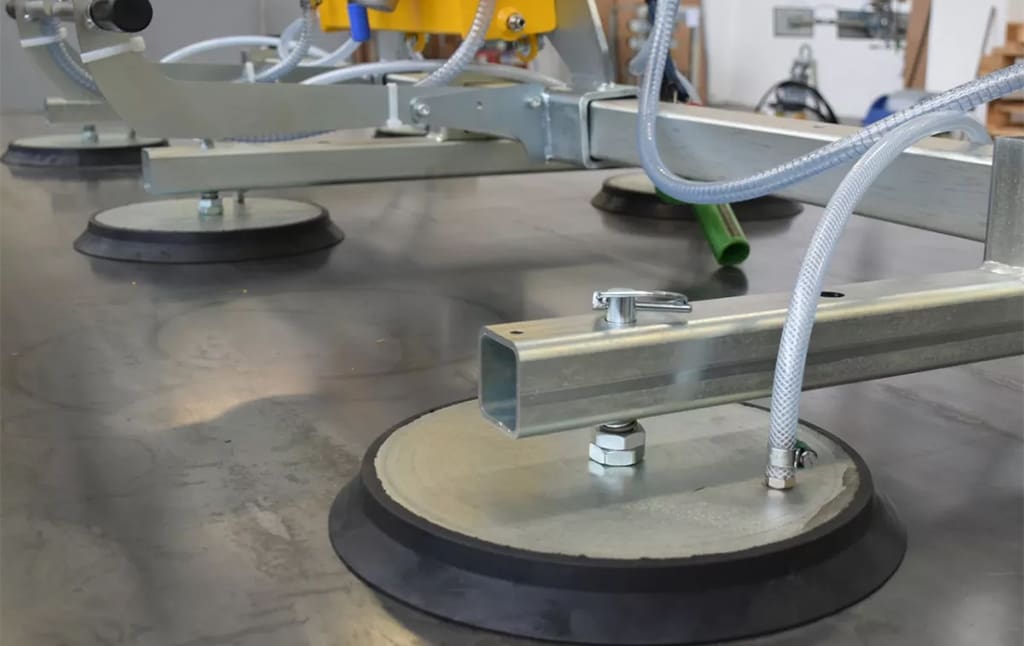When it comes to lifting equipment for sheet metal, the choice between magnetic lifters and vacuum lifters plays a crucial role in determining efficiency and safety. Let’s delve into the key differences between the two, considering various factors such as material compatibility, grip mechanism, safety features, and overall stability.
Material Compatibility
One fundamental distinction lies in the type of materials each lifter can handle. Vacuum lifters, such as those from Righetti, excel in versatility, capable of handling a wide range of materials, including metal, stainless steel, copper, and other non-ferrous metals. In contrast, magnetic lifters face limitations, unable to handle stainless steel, aluminium, copper, and non-ferrous metals. This significant difference implies that magnetic lifters can only lift approximately 50% of the metal sheets available in the market.
Grip Mechanism
The grip mechanism further sets these lifters apart. Vacuum lifting equipment for sheet metal is designed to work specifically with metal sheets, allowing for the precise lifting of one sheet at a time. Suction cups adhere securely to the surface, ensuring a safe and controlled lift without disturbing sheets below. On the other hand, magnetic lifters operate using a magnetic field, which may extend beyond the touched surface, leading to complications during lifting. This magnetic field can inadvertently lift multiple sheets simultaneously, creating operational challenges.
Safety Features
Safety is a paramount consideration in the design of lifting equipment. Magnetic lifters rely on a constant power source, posing a potential reliability issue. In the event of a power outage, the magnet loses strength, jeopardizing both the operator and the lifted material. In contrast, vacuum lifters, like those offered by Righetti, feature a vacuum tank and circuit that ensures suction with the suction pads. This innovative design guarantees that, even in the absence of electric power or malfunctions, the sheet metal remains securely held. Vacuum lifters also offer a broader range of operating solutions, including compressed air or rechargeable batteries, enhancing safety and operational flexibility.
Stability and Handling
Stability and handling are critical factors in the lifting process. Magnetic lifters typically have a single point of anchoring, making the management of long and non-standard materials challenging. In contrast, vacuum lifters are constructed with frames and structures accommodating multiple suction pads, tailored to the weight and dimensions of the metal sheet. This design ensures stability and safety, simplifying the lifting process and contributing to a safer work environment.
In summary, when choosing between magnetic and vacuum lifters for sheet metal, consider factors such as material compatibility, grip mechanism, safety features, and overall stability. Righetti’s vacuum lifters emerge as a versatile and safe choice, offering a comprehensive solution for your lifting needs.
Browse our range of lifting magnets, and Righetti Vacuum lifting equipment today!
Published 21st December 2023


